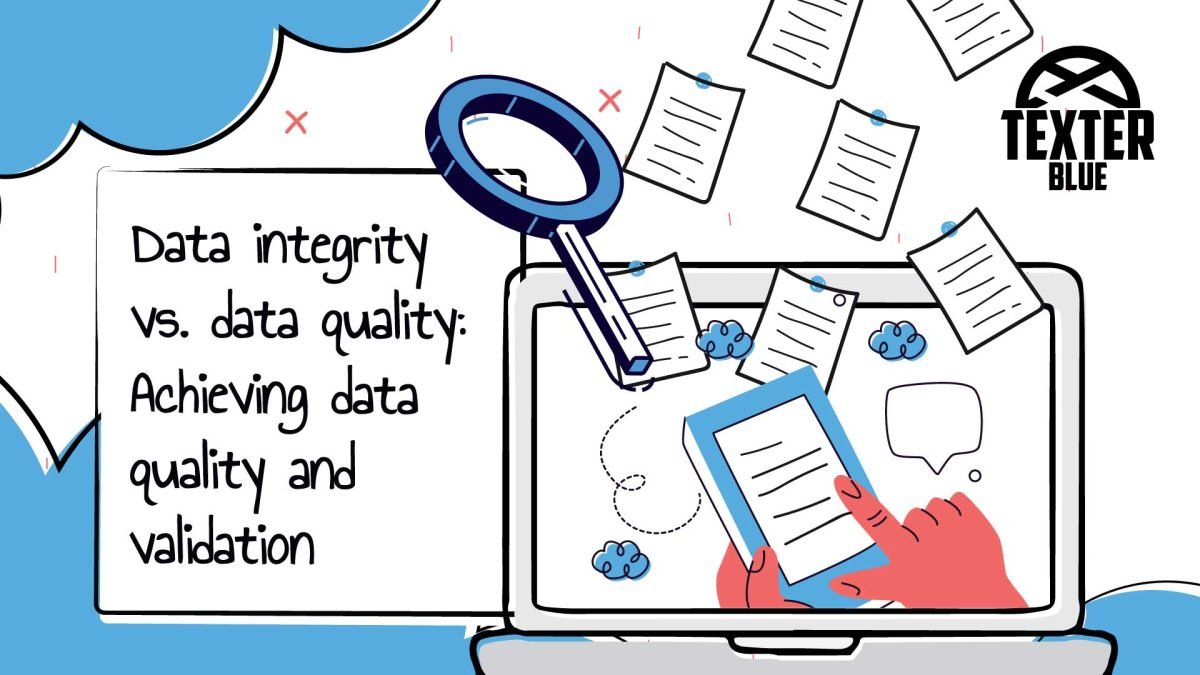When data integrity is discussed, it involves ensuring that the data within an organization is complete, accurate, consistent, accessible, and secure. These aspects together determine the reliability of the data. Assessing data quality against these criteria helps determine how suited the data is for its intended use. For organizations relying on data for decision-making, providing data access to teams, and offering data to customers, maintaining good data quality and integrity is crucial.
Data integrity
To reach a high level of data integrity, organizations set up rules and processes for how data is collected, stored, and used. To aid the process, these guidelines can be used:
- Checking data for accuracy
- Disposing of duplicate data
- Backing up data
- Controlling data through access controls
- Maintaining records of data changes for accountability
This practice is called data governance. It means creating and following rules to prevent mistakes, data loss, and other issues with sensitive data. Organizations can use various tools and services for this.
Benefits of data integrity
Organizations with strong data integrity can:
- Recover data faster if there’s a breach or unexpected downtime
- Guard against unauthorized access and changes to data
- Follow rules and standards more effectively
Having strong data integrity also improves business decisions by making analytics more accurate. The more complete and accurate the data, the better. This helps leaders set and achieve goals, boosting confidence among employees and customers. Even data science tasks like machine learning benefit from good data integrity. When the model is trained on reliable and accurate data, it becomes better at making predictions or automating tasks for the business
Data quality
Data quality is basically how good the data is. Organizations use measures like accuracy, completeness, consistency, validity, uniqueness, and timeliness to figure out if the data is useful for a particular business purpose.
Determining data quality
Data quality analysts measure datasets and assign them scores. If the data scores well in all aspects, it’s seen as high-quality, reliable, and trustworthy for its intended use. Organizations use data quality rules to measure and keep data high quality, making sure it meets the organization’s criteria.
4 benefits of good data quality
1) Enhanced efficiency
Users and data scientists can save time by easily accessing and analysing datasets without the hassle of searching or formatting data across different systems. This not only boosts confidence in data use but also prevents wasting time on incomplete or inaccurate information.
2) Increased value
Consistent formatting and context for users or applications allow organizations to extract value from data that might have otherwise been overlooked.
3) Improved collaboration and decision-making
High-quality data ensures uniformity across systems and departments, enhancing collaboration and decision-making among those who rely on the same accurate data.
4) Cost reduction and regulatory compliance
Locating and accessing high-quality data effortlessly reduces labour costs and lowers the risk of manual data entry errors. Storing and compiling data becomes simpler, improving regulatory compliance.
Texport: Alfresco Exports & Imports by Texter Blue
Introducing a new mindset for upgrades and content transfer, we’ve developed a solution that exports and imports at object level supporting all Alfresco object types and it carries the symbology of true export.
Full Support – Supports content, metadata, relationships, permissions, versions, tags, categories, sites-memberships, and all other repository node relations from a source Alfresco repository to any target Alfresco instance.
Optimized – Multi-threaded tool that leverages low level OS and cloud resources via its close relation with Python, as such it’s fully optimized for export/import throughput, ingestion rates of up to 2800 nodes/sec.
Native S3 – Native S3 support allowing full repository bidirectional transfer from a normal fileContentStore into an S3ContentStore
Clean Data – Move all content or choose to archive or dispose certain areas of the repository – for example the archiving part of the audit-trail to increase database performance.
Record – Keep a record of all exports and imports executed for validation and data quality purposes. It ships with an ElasticShearch integration providing robust dashboards in Kibana for content transfer executions overview.
Cloud Ready – Container friendly and Cloud ready, adding security and backup options in future relations.
A clever digital transformation…
Texport provides the opportunity to implement a clever digital transformation to the way the organisation interacts with their digital content, consolidating and enriching data – tagging, categorising, auto-classification, applying AI – thus increasing efficiency and optimising the investment.
Download here the Texport – Alfresco Exports & Imports – DataSheet:
By submitting you confirm that you have read and agreed with our Privacy Policy.
If you’re struggling with your digital transformation, remember… you are not alone in this… Texter Blue is here to help you providing the best results! Make sure you read our news and articles and contact us.

